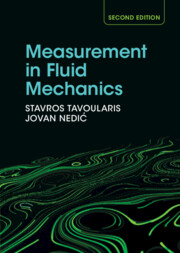Refine search
Actions for selected content:
5487 results in Thermal-fluids engineering
Chapter 4 - Hydroelasticity: Hydrodynamics and Elasticity
- from Part I - Frequency Domain Dynamics
-
- Book:
- Introduction to Marine Dynamics
- Published online:
- 31 October 2024
- Print publication:
- 30 May 2024, pp 55-79
-
- Chapter
- Export citation
Chapter 5 - Marine Dynamics in Regular Waves
- from Part I - Frequency Domain Dynamics
-
- Book:
- Introduction to Marine Dynamics
- Published online:
- 31 October 2024
- Print publication:
- 30 May 2024, pp 80-176
-
- Chapter
- Export citation
Chapter 7 - Foundations of Probabilistic Marine Dynamics
- from Part II - Stochastic Marine Dynamics
-
- Book:
- Introduction to Marine Dynamics
- Published online:
- 31 October 2024
- Print publication:
- 30 May 2024, pp 203-231
-
- Chapter
- Export citation
Part I - Frequency Domain Dynamics
-
- Book:
- Introduction to Marine Dynamics
- Published online:
- 31 October 2024
- Print publication:
- 30 May 2024, pp 1-176
-
- Chapter
- Export citation
Chapter 2 - Fluid Modeling: Ideal Fluid Theory
- from Part I - Frequency Domain Dynamics
-
- Book:
- Introduction to Marine Dynamics
- Published online:
- 31 October 2024
- Print publication:
- 30 May 2024, pp 21-40
-
- Chapter
- Export citation

Measurement in Fluid Mechanics
-
- Published online:
- 25 April 2024
- Print publication:
- 11 April 2024
-
- Textbook
- Export citation
Preface
-
- Book:
- Flow Control
- Published online:
- 04 April 2024
- Print publication:
- 11 April 2024, pp xi-xiv
-
- Chapter
- Export citation
16 - Retrospection and Outlook
-
- Book:
- Measurement in Fluid Mechanics
- Published online:
- 25 April 2024
- Print publication:
- 11 April 2024, pp 595-598
-
- Chapter
- Export citation
9 - Shock–Boundary-Layer Interaction
-
- Book:
- Flow Control
- Published online:
- 04 April 2024
- Print publication:
- 11 April 2024, pp 377-407
-
- Chapter
- Export citation
8 - Fluid Mechanical Apparatus and Experimental Practices
-
- Book:
- Measurement in Fluid Mechanics
- Published online:
- 25 April 2024
- Print publication:
- 11 April 2024, pp 296-344
-
- Chapter
- Export citation
1 - Flow Properties and Basic Principles
-
- Book:
- Measurement in Fluid Mechanics
- Published online:
- 25 April 2024
- Print publication:
- 11 April 2024, pp 3-30
-
- Chapter
- Export citation
5 - Free Shear Layers and Jets
-
- Book:
- Flow Control
- Published online:
- 04 April 2024
- Print publication:
- 11 April 2024, pp 175-219
-
- Chapter
- Export citation
2 - Measuring Systems
-
- Book:
- Measurement in Fluid Mechanics
- Published online:
- 25 April 2024
- Print publication:
- 11 April 2024, pp 31-95
-
- Chapter
- Export citation
10 - Measurement of Flow Rate
-
- Book:
- Measurement in Fluid Mechanics
- Published online:
- 25 April 2024
- Print publication:
- 11 April 2024, pp 381-396
-
- Chapter
- Export citation
References
-
- Book:
- Flow Control
- Published online:
- 04 April 2024
- Print publication:
- 11 April 2024, pp 432-462
-
- Chapter
- Export citation
6 - Measurement Uncertainty
-
- Book:
- Measurement in Fluid Mechanics
- Published online:
- 25 April 2024
- Print publication:
- 11 April 2024, pp 194-232
-
- Chapter
- Export citation
6 - Two-Dimensional Laminar Boundary Layers
-
- Book:
- Flow Control
- Published online:
- 04 April 2024
- Print publication:
- 11 April 2024, pp 220-277
-
- Chapter
- Export citation
14 - Measurement of Temperature
-
- Book:
- Measurement in Fluid Mechanics
- Published online:
- 25 April 2024
- Print publication:
- 11 April 2024, pp 541-570
-
- Chapter
- Export citation
5 - Frequency Analysis of Signals
-
- Book:
- Measurement in Fluid Mechanics
- Published online:
- 25 April 2024
- Print publication:
- 11 April 2024, pp 168-193
-
- Chapter
- Export citation
Part II - Measurement Techniques
-
- Book:
- Measurement in Fluid Mechanics
- Published online:
- 25 April 2024
- Print publication:
- 11 April 2024, pp 345-346
-
- Chapter
- Export citation
